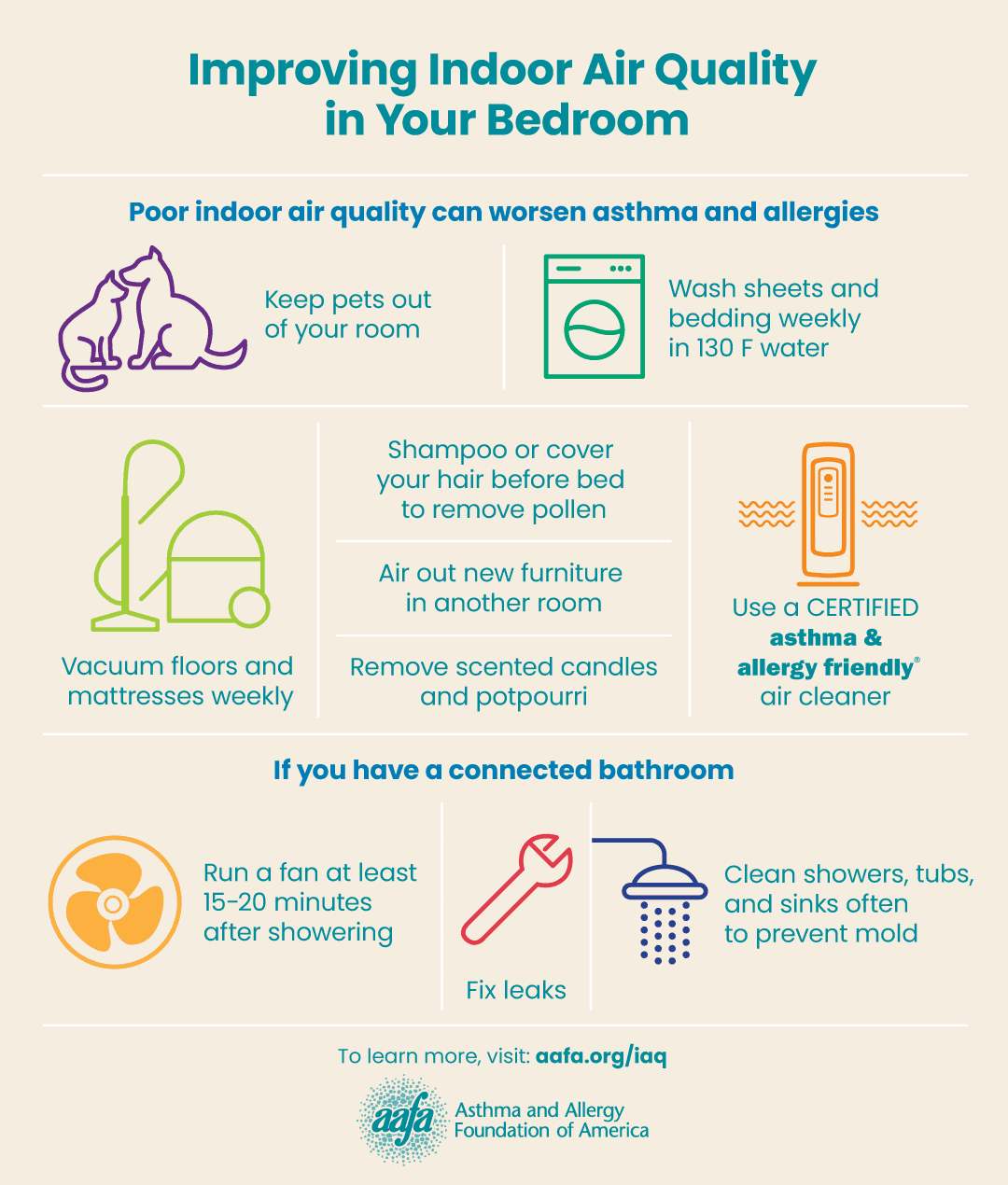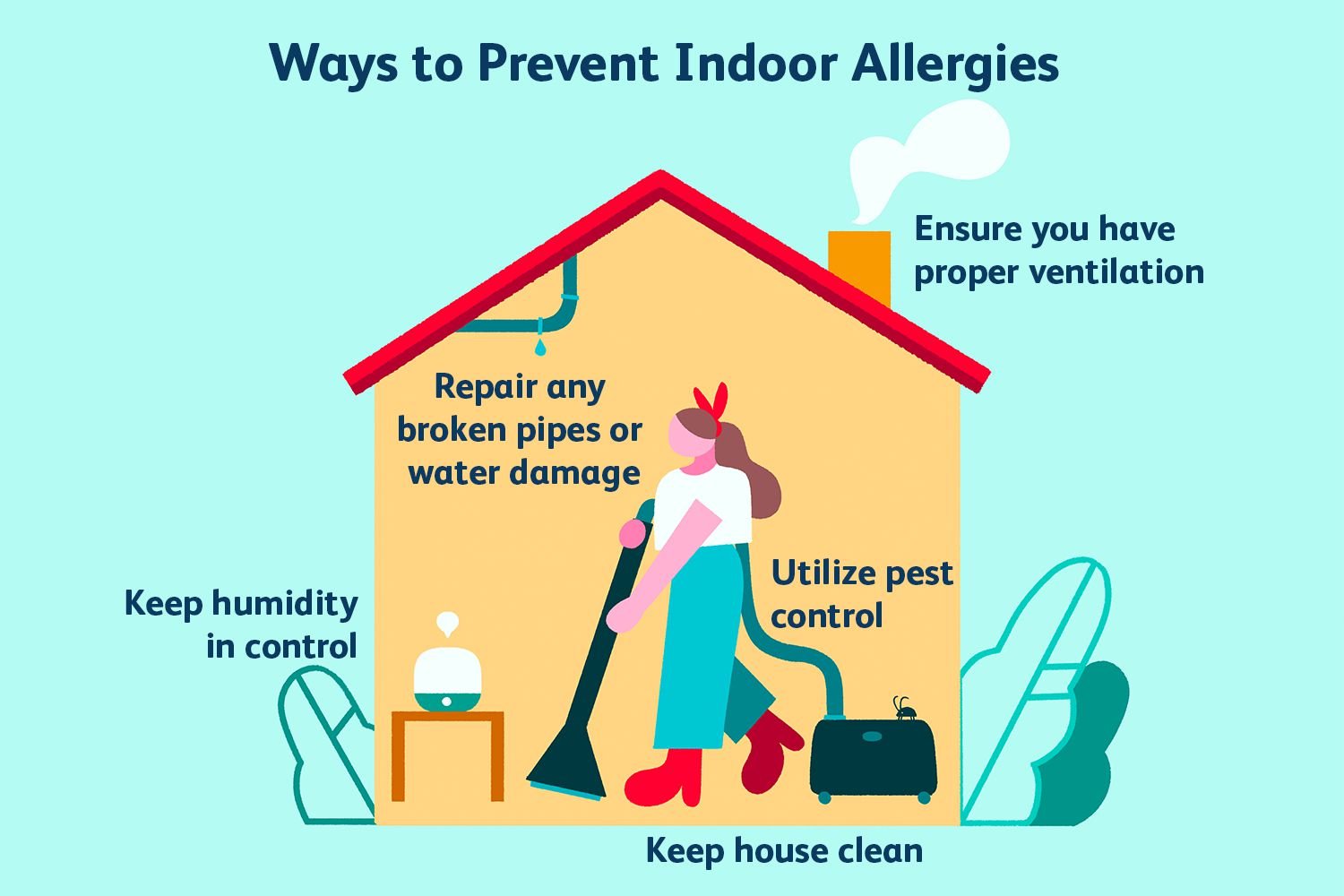Reducing indoor pollen during allergy season starts with keeping windows closed and using air purifiers. Simple steps can help create a more comfortable home environment.
Allergy season can be tough, especially when pollen makes its way indoors. Sneezing, itchy eyes, and a runny nose can ruin your day. But don’t worry, there are ways to keep pollen levels down inside your home. By making a few changes, you can breathe easier and enjoy a more comfortable living space.
Whether it’s through cleaning tips or smart choices in home décor, reducing indoor pollen is possible. Let’s explore effective methods to keep your home a haven during allergy season.

Credit: www.childrens.com
Identify Common Indoor Pollen Sources
During allergy season, reducing indoor pollen is crucial for those with allergies. One effective way is to identify common indoor pollen sources. By knowing these sources, you can take steps to minimize pollen exposure indoors.
Plants And Flowers
Indoor plants and flowers can be significant pollen sources. While they add beauty and fresh air, they can also release pollen. Choose low-pollen houseplants like ferns and palms. Avoid high-pollen plants like chrysanthemums and sunflowers.
Consider placing plants in less-used rooms. This reduces pollen in main living areas. Regularly wipe leaves with a damp cloth to remove pollen. This simple step can greatly improve indoor air quality.
Open Windows And Doors
Open windows and doors let fresh air in. They also allow pollen to enter. Pollen levels are high in the morning and early evening. Keep windows and doors closed during these times. Use air conditioning with a clean filter to keep the air cool and pollen-free.
Install screens on windows and doors. Fine mesh screens can block pollen from entering. Also, use weather stripping around doors and windows. It helps keep pollen outside where it belongs.
Implement Air Filtration Systems
Install air filtration systems to reduce indoor pollen during allergy season. These systems trap pollen and improve air quality. Enjoy cleaner, healthier indoor air with fewer allergens.
Implementing air filtration systems can significantly reduce indoor pollen during allergy season. Clean air is crucial for those who suffer from allergies. By using proper air filtration, you can breathe easier and live more comfortably.Hepa Filters
HEPA filters are highly effective at trapping pollen. They capture up to 99.97% of particles. These filters are a must-have for any home. They work best in HVAC systems. Regularly check and replace them. This ensures they function at peak efficiency.Air Purifiers
Air purifiers help remove pollen from the air. They come in various sizes and types. Choose one with a HEPA filter. Place it in the most-used rooms. This will keep your air cleaner. Remember to change the filters as recommended. This maintains the air purifier’s effectiveness. By incorporating these air filtration systems, you can create a healthier home environment. This will help reduce allergy symptoms and improve overall well-being.Regular Cleaning Routines
Reducing indoor pollen during allergy season can greatly improve your comfort. Regular cleaning routines are essential to keep pollen at bay. Consistent cleaning helps remove allergens that settle indoors. Below are some effective strategies.
Vacuuming And Dusting
Vacuum your floors and carpets at least twice a week. Use a vacuum with a HEPA filter. This filter traps pollen and other allergens. Don’t forget to vacuum upholstered furniture as well. Pollen can settle on sofas and chairs. Dust all surfaces regularly. Use a damp cloth to capture dust instead of spreading it around. Focus on areas where pollen can collect, like shelves and window sills.
Washing Bedding And Curtains
Wash your bedding weekly in hot water. Pollen can cling to sheets and pillowcases. Hot water helps kill any lingering allergens. Curtains can also trap pollen. Wash or vacuum them regularly. If possible, choose easy-to-wash window coverings. This can make your cleaning routine simpler.

Credit: www.childrens.com
Control Indoor Humidity
Managing indoor humidity is crucial for reducing pollen levels during allergy season. High humidity can make pollen particles stickier, increasing their impact. By controlling humidity, you can create a more comfortable environment and minimize pollen’s adverse effects.
Dehumidifiers
Dehumidifiers are effective tools for keeping indoor humidity levels in check. They help remove excess moisture from the air, making it harder for pollen to thrive.
Here are some tips for using dehumidifiers:
- Place the dehumidifier in rooms where you spend most of your time.
- Ensure the device is appropriately sized for the room.
- Empty the water collection bucket regularly.
- Clean the filter to maintain efficiency.
Ventilation Tips
Proper ventilation is key to reducing indoor pollen. It helps in circulating air and removing pollen particles from your home.
Consider these ventilation tips:
- Use exhaust fans in the kitchen and bathroom to remove moisture and pollen.
- Open windows briefly to allow fresh air, but avoid during peak pollen times.
- Install air purifiers with HEPA filters to capture pollen particles.
- Maintain your HVAC system and change filters regularly.
Combining these strategies can significantly reduce indoor pollen and improve your quality of life during allergy season.
Use Allergen-proof Bedding
During allergy season, keeping your indoor space free from pollen is crucial. One effective way to do this is by using allergen-proof bedding. These specially designed covers can help create a barrier between you and pollen, reducing your symptoms and providing a more restful night’s sleep.
Mattress Covers
Investing in a mattress cover can be a game-changer for allergy sufferers. These covers are made from materials that block pollen and other allergens. Make sure to choose a cover that fully encases your mattress. This will prevent pollen from settling in and causing issues. Look for covers that are breathable yet tightly woven to ensure comfort and effectiveness.
| Feature | Benefit |
|---|---|
| Full Enclosure | Prevents pollen from entering |
| Breathable Material | Ensures comfort while sleeping |
| Tight Weave | Blocks small allergens |
Pillow Covers
Pillows are another common place where pollen can settle. Using allergen-proof pillow covers can significantly reduce your exposure. These covers work by creating a barrier that pollen cannot penetrate. Choose covers that are easy to remove and wash. This will help you keep them clean and free from allergens.
- Choose covers that encase the entire pillow.
- Opt for washable materials for easy maintenance.
- Look for covers with zippers for a snug fit.
By incorporating these allergen-proof bedding solutions, you can create a more comfortable, pollen-free sleeping environment. This is a simple yet effective way to manage your allergy symptoms during the peak season.

Credit: community.aafa.org
Limit Outdoor Exposure
Reducing indoor pollen during allergy season can be challenging. One effective strategy is to limit outdoor exposure. By taking a few simple steps, you can minimize the amount of pollen that enters your home. This will help you breathe easier and enjoy a more comfortable living space.
Changing Clothes After Outings
After spending time outside, change your clothes as soon as you get home. Pollen can stick to your clothing and bring allergens into your living space. Place your worn clothes in a laundry basket and wash them regularly. This simple step can significantly reduce indoor pollen levels.
Showering Before Bed
Showering before bed can help remove pollen from your skin and hair. This prevents pollen from transferring to your bedding and causing nighttime allergies. A quick shower can make a big difference in your sleep quality and overall comfort.
Choose Indoor-friendly Plants
Choosing indoor-friendly plants can significantly reduce indoor pollen during allergy season. Indoor plants improve air quality. Yet, some plants produce more pollen than others. Selecting low-pollen plants can make your home a haven during allergy season.
Low-pollen Plants
Certain plants produce very little pollen. These are great choices for reducing indoor allergens. Consider plants like the Peace Lily. It is both beautiful and low in pollen. The Snake Plant is another excellent option. It requires little care and does not produce much pollen. The Bamboo Palm is also a good choice. It cleans the air and produces minimal pollen.
Proper Plant Care
Taking good care of your indoor plants helps keep pollen levels low. Regularly dust the leaves of your plants. This prevents pollen from spreading in the air. Water your plants adequately. Over-watering can promote mold, which can worsen allergies.
Place plants in areas with good airflow. This helps to keep pollen from settling. Prune your plants regularly. Remove dead leaves and flowers. This reduces the amount of pollen in your home. Keeping your plants healthy is key to reducing indoor pollen.
Consult Allergy Specialists
Consulting allergy specialists can provide significant relief during allergy season. Specialists offer tailored advice and treatment plans to reduce indoor pollen. Their expertise helps you pinpoint specific allergens affecting you, enabling effective management strategies.
Allergy Testing
Allergy testing is crucial to identify specific pollen types that trigger your symptoms. Specialists use skin prick tests and blood tests to detect allergens. These tests help in creating a personalized treatment plan. Knowing your exact allergens allows you to take targeted actions to minimize exposure.
Immunotherapy Options
Immunotherapy, also known as allergy shots, can reduce sensitivity to pollen. These treatments help your immune system build tolerance over time. Specialists may recommend subcutaneous immunotherapy (SCIT) or sublingual immunotherapy (SLIT). SCIT involves regular injections, while SLIT uses tablets or drops under the tongue.
Both methods aim to gradually desensitize your immune response. This long-term solution can significantly reduce allergy symptoms. Discuss with your specialist to determine the best option for you.
Frequently Asked Questions
How Can I Reduce Indoor Pollen?
To reduce indoor pollen, keep windows closed and use air purifiers. Clean and vacuum frequently. Wash bedding often.
What Are The Best Air Purifiers For Pollen?
HEPA air purifiers are best for removing pollen. They filter out tiny particles, improving indoor air quality significantly.
Can Indoor Plants Help With Pollen?
Certain indoor plants can help reduce indoor pollutants. However, they are not effective in significantly reducing pollen levels.
How Often Should I Clean During Allergy Season?
During allergy season, clean your home at least twice a week. This helps in reducing indoor pollen and allergens.
Conclusion
Reducing indoor pollen can make allergy season more bearable. Keep windows closed. Use air purifiers. Clean regularly to remove pollen. Wash bedding often. Consider using allergy-proof covers. Avoid bringing outdoor clothes inside. Shower after being outside. These steps can help.
Enjoy a comfortable home. Breathe easier this allergy season. Make small changes. Feel the difference.
Rakib Sarwar is a Registered Pharmacist and a reputed health and wellness blogger. He has a great interest in Air purifiers.
